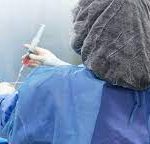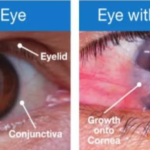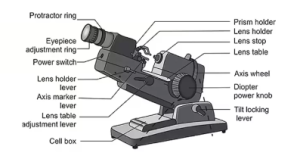India was the first country in the world to launch the ‘National Programme for Control of Blindness (NPCB)’ in year 1976 as 100% centrally sponsored programme with the following goals:
• To provide comprehensive eye care facilities for primary, secondary and tertiary levels of eye healthcare, and
• To reduce the prevalence of blindness in population from 1.38% (ICMR 1971-174) to 0.31 by 2000 AD.
Major flips in NPCB
• Inclusion in `Prime Minister’s-20 point programme’in 1982, was the first major flip for NPCB.
•Launching of ‘Cataract Blindness Control Project’ assisted by World Bank from 1994-2001 was another major flip for NPCB. This project was launched to reduce the cataract back-log in 7 States which were identified to have the highest prevalence of cataract blindness by WHO-NPCB survey (1986-89). These, in descending order, are: Uttar Pradesh, Tamil Nadu, Madhya Pradesh, Maharashtra, Andhra Pradesh, Rajasthan and Orissa.
• Adoption of vision 2020: Right to Sight in 2001 is the most prestigious major flip for NPCB.
OBJECTIVES:-
Vision 2020 has been adopted in NPCB with the objective to eliminate avoidable blindness by the year 2020.
Present objectives of the NPCB include:
•Reduction in the backlog of blindness through identification and treatment of blinds.
• Development and strengthening of comprehensive eye-care facilities in every district.
•Development of human resources for providing eye care services.
•Improvement in quality of service delivery. • Securing participation of voluntary organizations and private practitioners in eye care.
•Enhancement in community awareness on eye care.
•Setting up of mechanism for referral, coordination and feedback between organizations dedicated to prevention, treatment and rehabilitation.
New initiatives in the 12th five year plan (FYP) :-
The NPCB has been made part of ‘Noncommunicable diseases (NCD)’ flexipool under the larger umbrella of ‘National Health Mission (NHM), during 12th FYP, which began in 2012. Some new initiatives added include:
• Distribution of free spectacles for near work to old persons suffering from presbyopia
• Development of Multipurpose District Mobile Ophthalmic Units (MDMOU) has been introduced with an objective to further expand eye-care coverage in remote and underserved areas. Four hundred Multipurpose District Mobile Ophthalmic Units have been approved for District Hospitals in a phased manner. Preference will be given to remote/ hilly areas including NE states and underprivileged regions to expand eye-care services.
• Tele-Ophthalmology Network units with linkage to ophthalmic consultation units in the Medical Colleges and RIOS are to be set up. The linkage and exchange of data is provided by internet.
PROGRAMME ORGANIZATION AND IMPLEMENTATION
Since 2001, NPCB is being implemented as per guidelines of the initiative ‘Vision 2020′(described later). During 12th five year plan (2012-2017), from the financial year 2013-14, it has been decided to continue the NPCB under the NCD flexipool within the overarching umbrella of the National Health Mission’. The contribution of the central government will be 75% and that of state/UT government will be 25% of the total fund requirement for NPCB.
Various programme activities implemented at central, state and district levels are as follows:16
1. CENTRAL LEVEL
At the central level, programme organization is the responsibility of the ‘National Programme Management Cell’ located in the office of Director General Health Services (DGHS), Department of Health, Government of India (GOI). To oversee the implementation of the programme three national bodies have been constituted as below:
National Blindness Control Board, chaired by Secretary Health to GOI.
•National Programme Coordination Committe chaired by Additional Secretary to GOI.
•National Technical Advisor Committee, headed Director General Health Services, GOI.
Central level activities include:
• Procurement of goods (major equipments, bulk consumables, vehicles, etc.)
• Nonrecurring grant-in-aid to NGOs.
• Organizing central level training courses.
• Information, education and communication (IEC) activities (prototype development and mass media).
• Development of MIS, monitoring and evaluation.
• Procurement of services and consultancy.
• Salaries of additional staff at the central level.
2. STATE LEVEL
The NPCB is implemented through the State Government Via ‘State Ophthalmic Cell’. All the work related to blindness control shall be routed through State Programme Officer/Joint Director (ophthalmology) in charge of NPCB. The Joint Director shall submit it to Director Health Services for final approval in accordance with the latest norms and parameters laid down for the 12th five year plan.
State ophthalmic cell activities include:
• Execution of civil works for new units.
•Repairs and renovation of existing units/ equipments.
• State level training and IEC activities.
•Management of State Project Cell.
• Salaries for additional staff.
‘State Blindness Control Society’ (SBCS) has been merged with State Health Society after launch of National Health Mission (NHM) for implementing the programme at the state level.
3. DISTRICT LEVEL
To organize the programme at district level, ‘District Blindness Control Societies’ were established. Under ‘National Health Mission’ the programme activities are to be implemented through ‘District Health Societies’
District blindness control society:
The concept of ‘District Blindness Control Society (DBCS)’ has been introduced, with the primary purpose to plan, implement and monitor the blindness control activities comprehensively at the district level under overall control and guidance of the ‘National Programme for Control of Blindness. This concept! s been implemented after pioneering work by DANIDA in five pilot districts in India.
Objective of DBCS establishment is to achieve the maximum reduction in avoidable blindness in the district through optimal utilisation of available resources in the district.
Need for establishment of DBCS was considered because of the following factors:
•To make control of blindness a part of the Government’s policy of designating the district as the unit for implementing various development programmes.
•To simplify administrative and financial procedures.
•To enhance participation of the community and the private sector.
Composition of DBCS. Each DBCS will have a maximum of 20 members, consisting of 10 ex-officio and 10 other members with following structure:
•Chairman: Deputy Commissioner/District Magistrate.
• Vice Chairman: Civil Surgeon/District Health Officer.
• Member Secretary: District Programme Manager (DPM) or District Blindness Control Coordinator (DBCC), who is appointed by the Chairman. DPM will coordinate the activities of the programme between the government and nongovernment organizations (NGOs).
• Members will include District Eye Surgeon, District Education Officer, President local IMA branch, President Rotary Club, representatives of various NGOs and local voluntary action groups. The exofficio members will be the members of the society as long as they hold the post. The term of other members is notified by the Chairman.
• Advisor of the society is the State Programme Manager.
•Technical guidance is provided by the Chief Ophthalmic Surgeon/Head of the Ophthalmology Department of Medical College.
Revised strategies adopted for implementation of programme at district level are:
• Annual district action plan is to be submitted by DBCS. Funding will be in two instalments through GOI/State Health Society.
• NGO participation made accountable; allotted area of operation.
•Revised guidelines for DBCS-capping of expenditure; phasing out contract managers.
•Emphasis on utilization of existing government facilities.
• Gradual shift from camp surgery to institutional surgery.
• Development of infrastructure and manpower for IOL surgery.
PLAN OF ACTION AND ACTIVITIES
The basic plan of action and activities of NPCB, since its inception in 1976, includes the following:16
I. Extension of eye care services
Through eye camps and mobile eye units.
II. Establishment of permanent infrastructure
Primary Eye Care, at peripheral level (PHCs and subcentres) is being strengthened by:
• Providing necessary equipment,
• Posting a paramedical ophthalmic assistant, and
• Organising refresher courses for doctors and other staff of PHC on prevention of blindness.
Read More Article:








